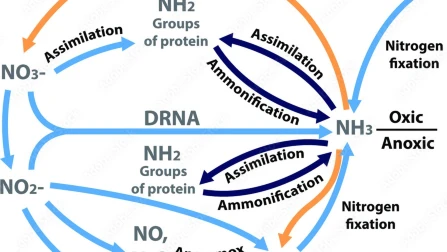
Overview
Biology and Fertility of Soils is an international journal focusing on all fundamental and applied aspects of soil biology and fertility of soils.
- Provides a platform for research aimed at understanding biological functions, processes, and interactions in soils particularly concerning the increasing demands of agriculture, deforestation and industrialization.
- Specializes in fundamental and applied aspects of microflora, microfauna, and soil productivity.
- Covers research on techniques and methods that evaluate processes, biogeochemical interactions and ecological stresses
- Publishes original papers, reviews, short communications, commentaries and opinion papers.
- Editor-in-Chief
-
- Paolo Nannipieri
- Impact factor
- 6.5 (2022)
- 5 year impact factor
- 6.9 (2022)
- Submission to first decision (median)
- 5 days
- Downloads
- 512,022 (2023)

Latest articles
Journal updates
-
Recommended content to read before submission
Biology and Fertility of Soils recommends reading content selected by the Editor in Chief to help you to prepare your manuscript before submission to the journal.
-
-
Call for Papers Special Issue on “Performance of carriers for microbial inoculation into the soil-plant system”
This special issue invites the latest studies in a variety of aspects related to bioencapsulation or immobilization of microbial inoculants, such as improving cells survival, biopolymers, encapsulation techniques, and functional biopolymers, focusing on the effect of the inoculant carrier on the microbial performance in the soil-plant system
Submission Deadline: 30 April 2024 | Expected 2024
-
Call for Papers Special Issue on “Tracing denitrification in terrestrial ecosystems”
This special issue will present new insights in denitrification research at different scales, using advanced experimental techniques with high spatial and temporal resolution as well as advanced modeling approaches
Submission Deadline: December 31, 2023 | Expected 2024
Journal information
- Electronic ISSN
- 1432-0789
- Print ISSN
- 0178-2762
- Abstracted and indexed in
-
- AGRICOLA
- ANVUR
- Astrophysics Data System (ADS)
- BFI List
- BIOSIS
- Baidu
- Biological Abstracts
- CAB Abstracts
- CLOCKSS
- CNKI
- CNPIEC
- Chemical Abstracts Service (CAS)
- Current Contents/Agriculture, Biology & Environmental Sciences
- Dimensions
- EBSCO
- EMBiology
- Engineering Village – GEOBASE
- Google Scholar
- Japanese Science and Technology Agency (JST)
- Meta
- Naver
- Norwegian Register for Scientific Journals and Series
- OCLC WorldCat Discovery Service
- Pathway Studio
- Portico
- ProQuest
- SCImago
- SCOPUS
- Science Citation Index Expanded (SCIE)
- TD Net Discovery Service
- UGC-CARE List (India)
- Wanfang
- Zoological Record
- Copyright information







